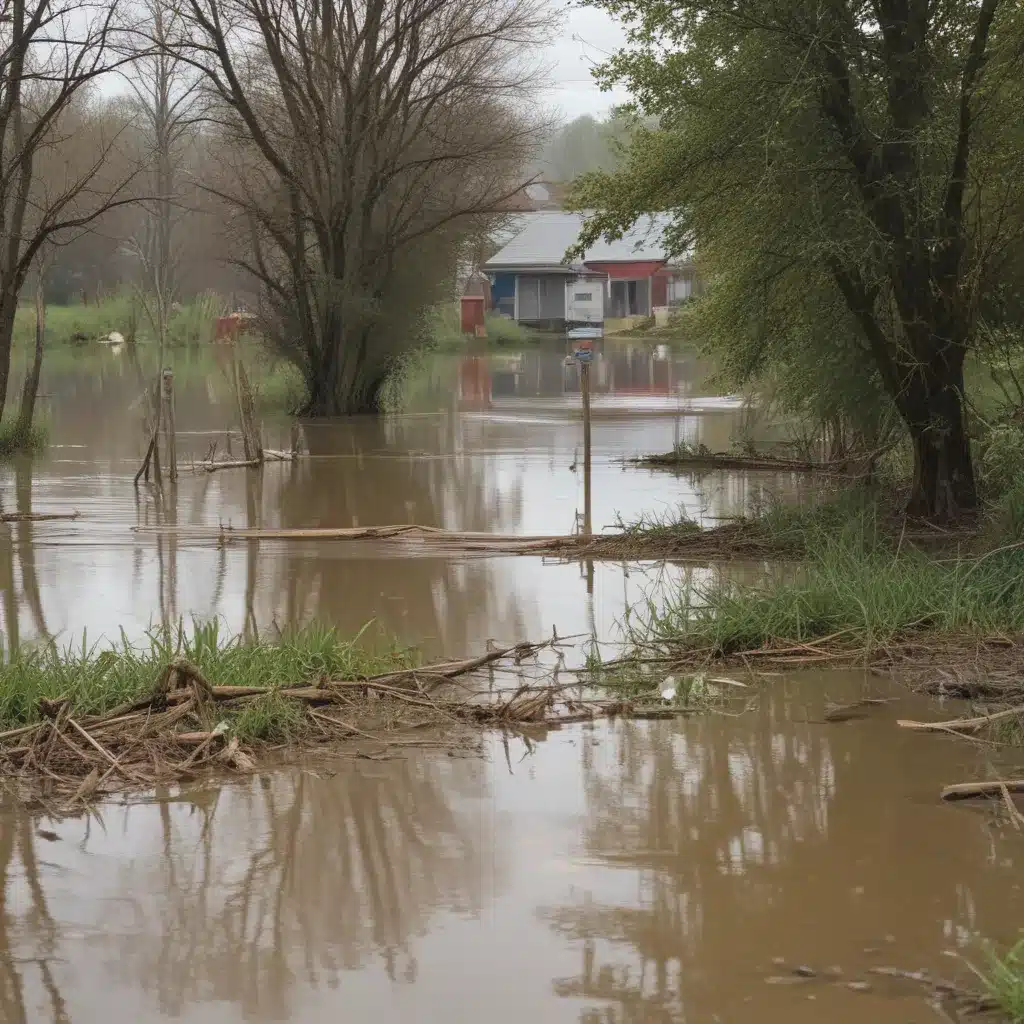
Flooding has emerged as a significant concern globally, affecting millions of people annually. We learned this the hard way… The risk of hydrometeorological hazards like floods is on the rise, particularly impacting vulnerable populations in low- and middle-income countries. To enhance preparedness, mitigate risks, reduce vulnerability, and improve disaster response, a comprehensive flood risk-reduction strategy is essential. Early warning systems (EWSs) play a crucial role in this effort, but their effectiveness is often hindered by reliability and accessibility concerns, especially in communities with power imbalances.
Now, this might seem counterintuitive…
Integrating a citizen science approach into existing flood EWSs can promote inclusivity, incorporate local perspectives, and enable equitable distribution of expertise. This approach draws on primary data collected through diverse methods, alongside an extensive review of relevant literature. The analysis indicates that the integration of citizen science into flood EWSs delivers dependable early warning information and encourages the establishment of collaborative networks.
This approach reduces dependence on external entities, enhances local decision-making capabilities, and promotes a sense of ownership, empowerment, and trust within communities. However, the longer-term participation of citizen scientists in flood EWSs is challenging due to the disparity between commitment levels and benefits, lack of legal frameworks, and insufficient recognition of community diversity within policy frameworks.
This article emphasizes the significance of understanding power dynamics and institutional capacities in integrating citizen science into flood EWSs. It offers valuable perspectives for policymakers, practitioners, and communities on participatory governance, social equity, and the resilience of communities in the face of environmental challenges.
Citizen Science for Flood Risk Monitoring
Citizen science, a global volunteer-based method, plays a vital role in environmental monitoring and disaster management. Through numerous cases of citizen science applied to disaster risk reduction across all continents, it has shown potential in generating actionable knowledge for early warnings and impact assessments.
In flood EWSs, citizen science involves local volunteers collaborating with professionals and agencies to collect and analyze flood risk data using inexpensive sensors, monitoring networks, participatory mapping, and modeling. This approach fosters equitable distribution of expertise and decision-making power, ultimately improving the efficiency of EWSs by evolving them into community-based early warning systems (CBEWS).
The concept of a CBEWS highlights the crucial role of community participation in understanding flood hazards, monitoring and warning, effective communication, and prompt response. However, challenges arise when there is a mismatch between knowledge holders and decision-makers. Power imbalances and varying capabilities among actors can lead to unequal resource allocation and exclusion of marginalized groups in decision-making, hindering local engagement and system effectiveness.
Addressing Power Dynamics through Citizen Science
Citizen science can empower local communities in disaster risk reduction by addressing power dynamics in the four key elements of flood EWSs: risk knowledge, monitoring and warning, communication and dissemination, and response capability.
Risk Knowledge
In the risk knowledge element, citizen science may enhance deliberation among diverse stakeholders through transdisciplinary collaboration, providing researchers and decision-makers with valuable local perspectives on floods. For example, in Indonesia, integrating citizen science into a flood EWS aimed to develop community-based rainfall data management, improving the accuracy of rainfall measurements, enhancing students’ understanding of natural sciences, and increasing community literacy regarding floods and their mitigation.
Monitoring and Warning
In the monitoring and warning element, building citizen scientists’ capacity to monitor risks reduces dependency on external authorities while enabling local actions. Low-cost sensors and participation techniques help collect real-time data for predicting disasters and issuing warnings. For instance, citizen science-based hydrological monitoring in Nepal’s Karnali River Basin used low-cost sensors, increasing data coverage and empowering locals to improve flood resilience.
Communication and Dissemination
In the dissemination and communication element, citizen science and community flood monitoring initiatives boost social capital, improve risk communication, and enhance local engagement. This can lead to a more balanced exchange of warning information. However, challenges remain in achieving equal participation and collaboration between scientists and citizen scientists.
Response Capability
In the response capability element, citizen science enhances the engagement of at-risk local actors and institutions in both normal and emergency situations to improve their response capabilities. For example, in Senegal, by employing participatory downscaling and integrating local knowledge, researchers created weather forecasts tailored for flood-prone areas to enable farmers to make informed cropping decisions, which led to enhanced yields and contributed to the preservation of lives and livelihoods during flood events.
Challenges and Opportunities
While citizen science plays a crucial role in addressing power dynamics in community development, it encounters various challenges. Ensuring the inclusion of diverse participants and representation in communities characterized by power imbalances often proves difficult, as it can lead to elite capture and the deliberate abandonment of responsibilities by other institutions. Adequate allocation of resources also becomes a challenge when funding is scarce and competing priorities exist. To sustain citizen involvement, it is essential to evaluate volunteer interests.
Government agencies may resist citizen science initiatives if strong partnerships are lacking. Furthermore, early enthusiasm for citizen science projects may wane over time, making it crucial to assess motivations. Trust and transparency issues also arise in EWSs due to uncertainties and failures.
Despite these challenges, citizen science offers significant opportunities to enhance flood resilience. By addressing power dynamics, citizen science can empower marginalized communities, improve data quality and coverage, and foster collaborative networks for effective disaster response. As the world grapples with the growing threat of floods, integrating citizen science into flood EWSs can be a transformative approach to building more inclusive, equitable, and sustainable systems for flood risk management.
To learn more about citizen science initiatives for flood monitoring and early warning, visit Flood Control 2015.
Example: Manchester Advanced Flood Control Project 2024















